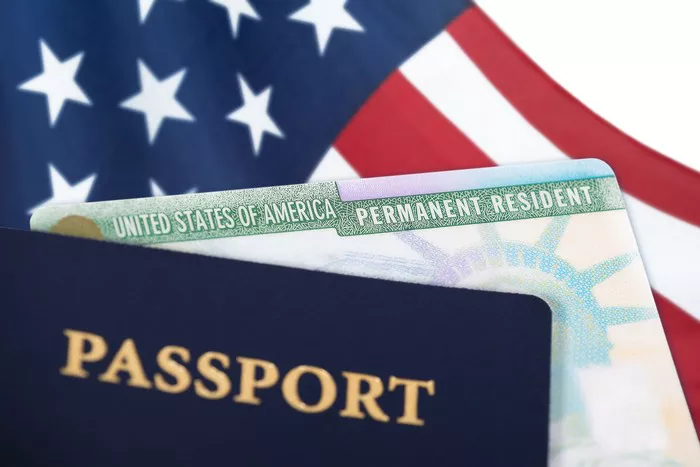For many individuals seeking to establish permanent residency in the United States, obtaining a green card through employment offers a viable pathway. However, navigating the complexities of the immigration process can be daunting, particularly when it comes to understanding the timelines involved. In this article, we delve into the various factors that influence the duration of obtaining a green card through employment, providing insights and guidance for prospective applicants.
Understanding the Green Card Process
Before delving into the timelines, it’s crucial to understand the basic framework of the green card application process. Generally, there are several steps involved:
Labor Certification (PERM): In most cases, the employer must first obtain a labor certification approval from the Department of Labor (DOL) through the Program Electronic Review Management (PERM) process. This involves demonstrating that there are no qualified U.S. workers available for the position being offered to the foreign national.
Immigrant Petition (I-140): Once the labor certification is approved, the employer can then file an Immigrant Petition for Alien Worker (Form I-140) with the United States Citizenship and Immigration Services (USCIS). This petition establishes the foreign national’s eligibility for permanent residency based on employment.
Adjustment of Status (I-485) or Consular Processing: After the I-140 petition is approved, the foreign national can proceed with either adjusting their status to that of a lawful permanent resident (Form I-485) if they are already in the United States, or undergo consular processing if they are residing abroad.
SEE ALSO: HOW MUCH DOES IT COST TO SPONSOR A GREEN CARD
Timelines for Obtaining a Green Card Through Employment
The timeline for obtaining a green card through employment can vary significantly depending on various factors, including the applicant’s country of origin, the specific employment-based category, government processing times, and potential backlogs. Below, we outline the typical timelines for each stage of the process:
Labor Certification (PERM): The PERM process can vary in duration, typically ranging from several months to over a year. Factors such as the complexity of the case, prevailing wage determinations, and potential audits can impact processing times. In some cases, employers may also need to undergo recruitment efforts to demonstrate a lack of qualified U.S. workers, further extending the timeline.
Immigrant Petition (I-140): Once the labor certification is approved, the employer can file the Form I-140 petition with USCIS. Processing times for the I-140 petition can vary based on the specific employment-based category and USCIS workload. On average, it may take anywhere from several months to over a year for the petition to be adjudicated.
Adjustment of Status (I-485) or Consular Processing: After the I-140 petition is approved, the foreign national can proceed with either adjusting their status or undergoing consular processing. The processing times for the Form I-485 adjustment of status application can vary depending on factors such as USCIS workload, biometrics appointments, and potential interviews. In some cases, applicants may be eligible to file for concurrent processing of the I-140 and I-485 petitions, which can streamline the process.
Factors Affecting Timelines
Several factors can influence the timelines for obtaining a green card through employment:
Country of Origin: Applicants from certain countries may face longer wait times due to per-country visa quotas and backlogs. This is particularly relevant for employment-based categories with high demand, such as the EB-2 and EB-3 categories.
Employment-Based Category: The specific employment-based category under which the green card application is filed can impact processing times. For example, the EB-1 category for individuals with extraordinary ability may have shorter wait times compared to the EB-3 category for skilled workers.
Government Processing Times: USCIS processing times can fluctuate based on various factors, including changes in immigration policies, resource allocation, and application volumes. Delays or backlogs at any stage of the process can extend overall processing times.
Potential RFEs and Audits: Requests for Evidence (RFEs) or audits from USCIS or the Department of Labor can prolong processing times as applicants and employers are required to provide additional documentation or information to address the agency’s concerns.
Interview Requirements: In some cases, applicants may be required to attend interviews as part of the adjudication process, which can further extend processing times.
Strategies for Expedited Processing
While the green card application process can be lengthy, there are certain strategies that applicants can employ to expedite processing:
Premium Processing(I-140): For certain employment-based categories, USCIS offers premium processing service, which guarantees processing within 15 calendar days for an additional fee. Employers can opt for premium processing when filing the Form I-140 petition to expedite adjudication.
Concurrent Filing: Eligible applicants may be able to file the Form I-140 and Form I-485 petitions concurrently, which can significantly streamline the process by allowing them to apply for adjustment of status while the immigrant petition is pending.
National Interest Waiver (NIW): Individuals who qualify for a National Interest Waiver (NIW) under the EB-2 category may be able to self-petition without the need for employer sponsorship, potentially expediting the process.
Expedited Processing Requests: In certain circumstances, applicants may be eligible to request expedited processing of their green card application based on urgent humanitarian reasons, significant public benefit, or severe financial loss to a company or individual.
Conclusion
Obtaining a green card through employment is a significant milestone on the path to permanent residency in the United States. While the process can be complex and time-consuming, understanding the various factors that influence timelines can help applicants better navigate the journey. By staying informed, leveraging available resources, and exploring expedited processing options when feasible, individuals can enhance their chances of obtaining a green card in a timely manner and realizing their aspirations of establishing permanent residency in the United States.


